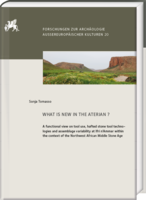|
weitere Titel zum Thema:
Download:
What is new in the Aterien? provides new insights into long-term technological changes during the North African Middle Stone Age (NAMSA) through the functional analysis of the lithic assemblage of Ifri n’Ammar, a rock shelter in the eastern Moroccan Rif. The sites’ well-preserved stratigraphy, containing two distinct occupation phases, including the oldest evidence of the Aterian technocomplex to date, provides an ideal case study for a detailed comprehension of the lithic assemblage variability across the North African Middle Stone Age period.
The functional analysis of the complete lithic assemblage combined with extensive tool experimentation generated innovative data that sheds new light on possible distinctions between the different assemblages. Although previous attempts have focused on the presence of Aterian tanged tools to explain the morphological variability between these assemblages, this study demonstrates that the presence of Aterian tanged tools did not influence the activities undertaken at the site. Here, the holistic functional approach, including not only use but also hafting and production wear, enables the reconstruction of the organic components of the Aterian stone tool technology and leds to a more profound understanding of the Aterian technocomplex. On the basis of these results, it can be concluded that the main disparity between the two types of assemblages can be linked to an increased utilisation of animal materials within the Aterian technical system. The study demonstrates the importance in applying a holistic functional approach for characterising and understanding the North African Middle Stone Age as it generates innovative and highly-detailed insights on the lithic assemblage variability and changes over time. |






